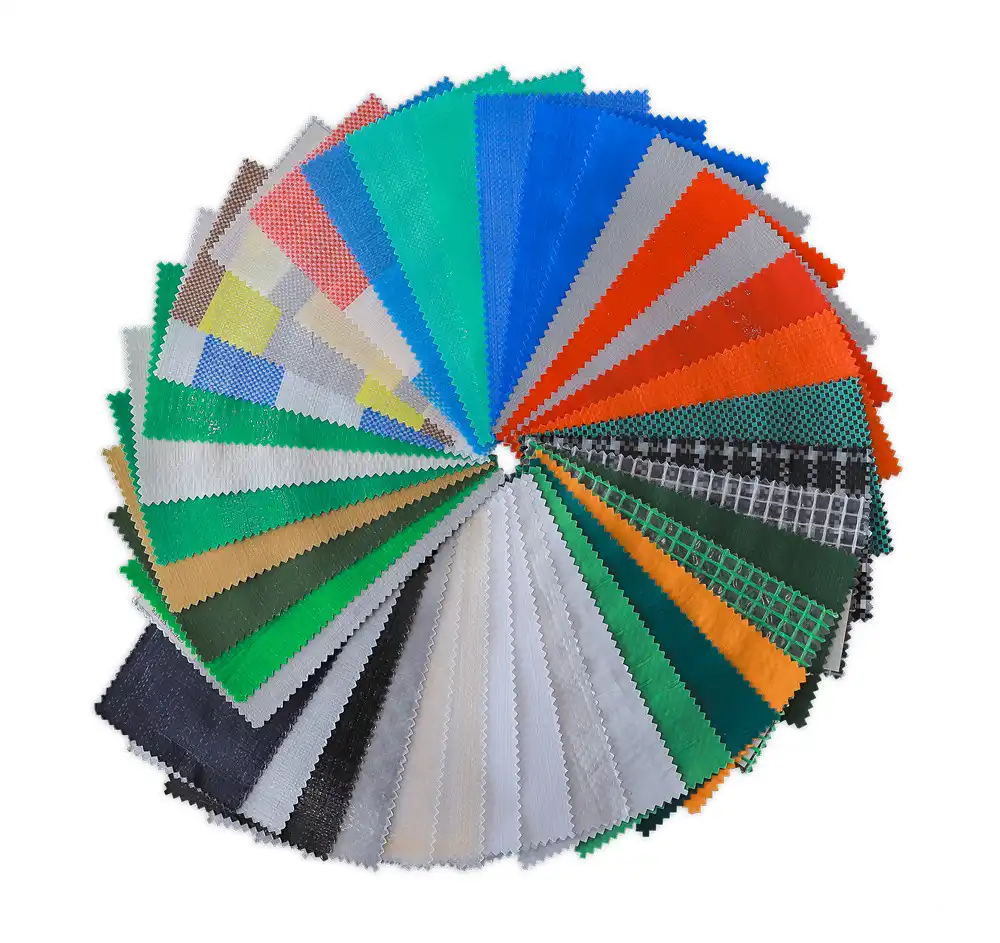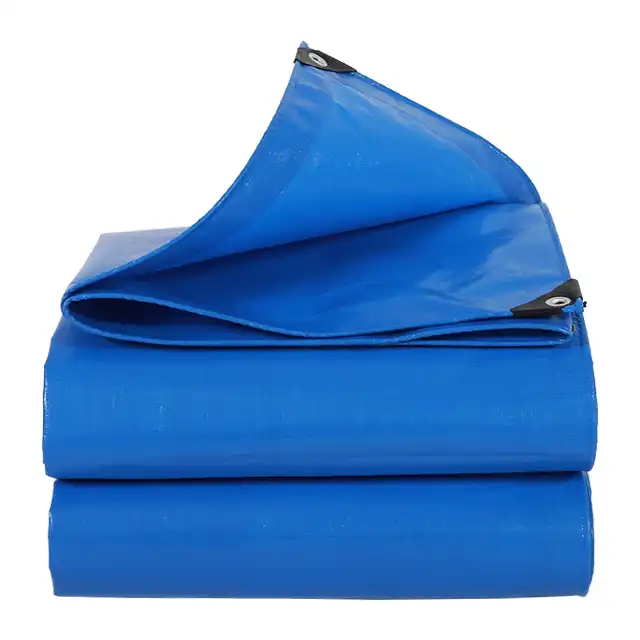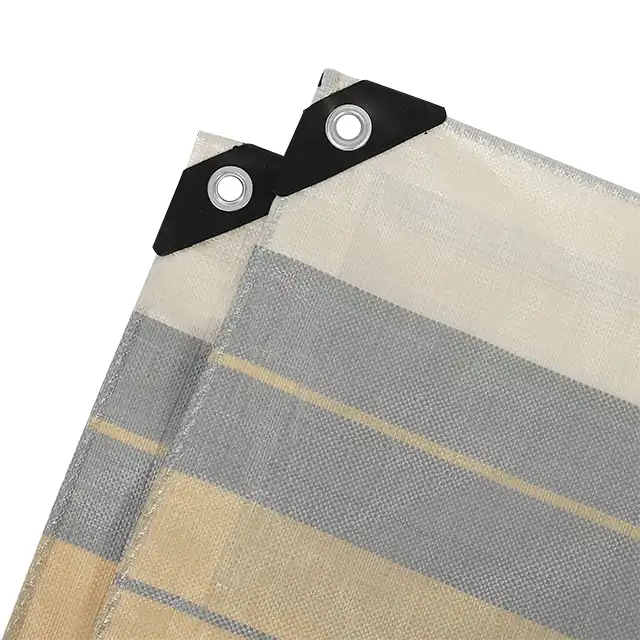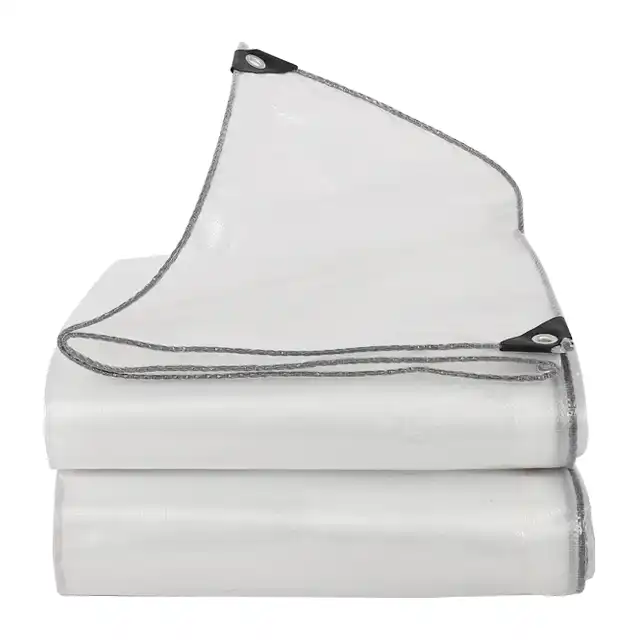Choosing the Right Roof Tarp After a Storm or Hurricane
When severe weather strikes, homeowners and property managers face the urgent challenge of protecting their buildings from further damage. The aftermath of storms and hurricanes often leaves roofs compromised, with missing shingles, torn materials, or gaping holes that expose the interior to rain, wind, and debris. In these critical moments, selecting the appropriate emergency roof tarp becomes a vital decision that can mean the difference between minor repairs and catastrophic structural damage. Understanding the key factors that influence tarp selection, from material composition to installation requirements, empowers property owners to make informed decisions during these stressful situations and safeguard their investments effectively.
Understanding Emergency Roof Tarp Requirements
Material Specifications and Durability Standards
 The foundation of effective emergency roof protection lies in understanding the specific material requirements that distinguish professional-grade emergency roof tarp solutions from standard consumer products. High-quality polyethylene (PE) tarpaulins manufactured with advanced extrusion technology offer superior performance characteristics essential for emergency roofing applications. These materials typically feature a mesh construction ranging from 6x6 to 16x16, with denier ratings between 600D to 1800D, providing the tensile strength necessary to withstand high winds and debris impact. The GSM (grams per square meter) rating, which ranges from 75 to 400gsm, directly correlates to the tarp's thickness and durability, with higher ratings offering enhanced puncture resistance and longevity. UV treatment is particularly crucial for emergency roof tarp applications, as prolonged exposure to sunlight can rapidly degrade untreated materials, compromising their protective capabilities. Professional manufacturers utilize LDPE lamination on both sides, creating a waterproof barrier that maintains integrity even under extreme weather conditions. The importance of selecting materials that meet these specifications cannot be overstated, as substandard products may fail during subsequent weather events, potentially causing more damage than the original storm.
The foundation of effective emergency roof protection lies in understanding the specific material requirements that distinguish professional-grade emergency roof tarp solutions from standard consumer products. High-quality polyethylene (PE) tarpaulins manufactured with advanced extrusion technology offer superior performance characteristics essential for emergency roofing applications. These materials typically feature a mesh construction ranging from 6x6 to 16x16, with denier ratings between 600D to 1800D, providing the tensile strength necessary to withstand high winds and debris impact. The GSM (grams per square meter) rating, which ranges from 75 to 400gsm, directly correlates to the tarp's thickness and durability, with higher ratings offering enhanced puncture resistance and longevity. UV treatment is particularly crucial for emergency roof tarp applications, as prolonged exposure to sunlight can rapidly degrade untreated materials, compromising their protective capabilities. Professional manufacturers utilize LDPE lamination on both sides, creating a waterproof barrier that maintains integrity even under extreme weather conditions. The importance of selecting materials that meet these specifications cannot be overstated, as substandard products may fail during subsequent weather events, potentially causing more damage than the original storm.
Size and Coverage Calculations
Determining the appropriate size for an emergency roof tarp requires careful assessment of the damaged area and consideration of proper installation techniques. Professional installations typically require coverage that extends well beyond the damaged area, with overlap margins of at least 4-6 feet on all sides to ensure adequate protection and secure anchoring points. Modern manufacturing capabilities allow for custom widths ranging from standard residential sizes up to 40 meters, accommodating everything from small residential repairs to large commercial applications. The length can be customized according to specific requirements, ensuring optimal coverage without unnecessary waste or inadequate protection. When calculating coverage needs, it's essential to account for the roof's pitch and any architectural features that may complicate installation, such as chimneys, vents, or dormers. Professional emergency roof tarp solutions often incorporate reinforced edges and strategically placed grommets to facilitate secure attachment and distribute stress loads evenly across the material. The ability to source wide-width materials without seams is particularly valuable for emergency applications, as seams represent potential failure points where water infiltration and wind damage are most likely to occur. Advanced manufacturing techniques utilizing water-jet looms up to 4.25 meters in width enable the production of seamless emergency roof tarp materials that provide superior protection compared to joined sections.
Weather Resistance and Performance Characteristics
The performance characteristics of emergency roof tarp materials under adverse weather conditions determine their effectiveness in protecting structures from ongoing damage. Professional-grade materials must demonstrate exceptional tear resistance, maintaining structural integrity even when subjected to sharp debris, extreme temperature fluctuations, and sustained high winds. The waterproof rating is critical, with quality materials achieving 100% waterproof performance through advanced coating processes that seal the fabric structure completely. Anti-freezing properties ensure that the emergency roof tarp remains flexible and manageable even in cold conditions, preventing brittle failure that could compromise the protective barrier. UV treatment not only prevents material degradation but also maintains the tarp's flexibility and strength over extended periods, which is essential when emergency repairs must remain in place for weeks or months while permanent repairs are planned and executed. Arctic flexibility features allow these materials to perform effectively across a wide temperature range, from sub-zero conditions to extreme heat, ensuring reliable protection regardless of seasonal weather variations. The combination of high durability, shrink-proof construction, and anti-corrosion properties creates a protective solution that can withstand the harsh conditions typically encountered in post-storm environments, providing property owners with confidence that their emergency roof tarp will perform as expected throughout the recovery period.
Installation Techniques and Safety Considerations
Proper Fastening and Anchoring Methods
The effectiveness of any emergency roof tarp depends critically on proper installation techniques that ensure secure attachment while minimizing additional damage to the existing roof structure. Professional installation begins with careful assessment of the damaged area and identification of structurally sound attachment points that can support the loads imposed by the tarp and wind forces. The use of appropriate fastening hardware is essential, with selections varying based on the roof material, structural condition, and expected weather conditions. For asphalt shingle roofs, specialized roofing screws with neoprene washers provide secure attachment while minimizing water infiltration at fastening points. Metal roofing applications may require different fastening approaches, utilizing existing structural elements or specialized clamps designed to avoid penetrating the roof membrane. The spacing of attachment points plays a crucial role in load distribution, with professional installations typically featuring fastener spacing no greater than 18-24 inches along the perimeter and major stress points. Emergency roof tarp materials with reinforced edges and properly positioned grommets facilitate secure installation by providing predetermined attachment points that distribute loads effectively across the material. The tensioning of the tarp during installation must be carefully balanced to provide adequate tautness for wind resistance while avoiding over-stressing the material or attachment points. Proper drainage consideration ensures that water runoff is directed away from the structure and doesn't pool on the tarp surface, which could create additional stress loads or infiltration points.
Safety Protocols and Equipment Requirements
Working on damaged roofs during emergency tarp installations presents significant safety hazards that require comprehensive safety protocols and appropriate equipment. Personal protective equipment including non-slip footwear, safety harnesses, hard hats, and cut-resistant gloves represents the minimum safety standard for roof work, with additional protection required based on specific site conditions. Fall protection systems must be established before beginning work, utilizing appropriate anchor points and safety lines rated for the anticipated loads. Weather conditions play a critical role in determining when installation work can be safely performed, with operations typically suspended during high winds, precipitation, or when surfaces are slippery from ice or moisture. The use of proper ladders or scaffolding systems ensures safe access to the roof while providing stable platforms for material handling and installation activities. Emergency roof tarp installation often requires team coordination, with multiple personnel needed to handle large materials safely and efficiently while maintaining safety protocols. Communication systems and emergency procedures must be established before work begins, ensuring that personnel can respond quickly to changing conditions or emergency situations. The structural integrity of the damaged roof must be carefully evaluated before beginning installation, with professional assessment recommended when significant structural damage is suspected. Electrical hazards, including proximity to power lines and potential electrical damage from the storm, require careful evaluation and appropriate safety measures to prevent electrocution or other electrical injuries during the installation process.
Quality Control and Inspection Procedures
Effective emergency roof tarp installation requires systematic quality control measures to ensure the protective system performs as intended throughout its service life. Initial inspection procedures should document the extent of existing damage, environmental conditions, and any factors that might affect installation or performance. Material inspection before installation verifies that the emergency roof tarp meets specified requirements and shows no damage that could compromise its effectiveness. During installation, regular quality checks ensure that fastening procedures are followed correctly, attachment points are secure, and the material is properly positioned and tensioned. Post-installation inspections should verify complete coverage of damaged areas, proper drainage patterns, secure attachment of all fasteners, and absence of potential failure points such as sharp edges or excessive stress concentrations. Documentation of the installation process, including photographs and written records, provides valuable information for insurance claims and planning permanent repairs. Regular monitoring throughout the service period allows for early detection of potential problems, such as loosening fasteners, material degradation, or developing tears that could compromise protection. Weather monitoring becomes particularly important following installation, with high wind or severe weather events requiring prompt post-storm inspections to verify continued integrity. The establishment of inspection schedules and protocols ensures that the emergency roof tarp continues to provide effective protection throughout its intended service life, with prompt attention to any issues that could compromise its performance.
Long-term Performance and Maintenance Strategies
Durability Assessment and Lifecycle Management
Understanding the long-term performance characteristics of emergency roof tarp installations enables property owners to make informed decisions about temporary protection strategies and permanent repair planning. Professional-grade PE tarpaulin materials demonstrate exceptional durability when properly selected and installed, with service lives often extending several months or even years depending on environmental conditions and material quality. The mesh construction and denier rating directly influence longevity, with higher specifications providing enhanced resistance to UV degradation, thermal cycling, and mechanical stress. Regular assessment of material condition allows for proactive maintenance and replacement decisions before failure occurs, preventing gaps in protection that could result in additional property damage. The tear-resistant properties of quality emergency roof tarp materials provide resilience against debris impact and wind loading, but regular inspection helps identify developing issues before they compromise the protective barrier. Advanced manufacturing techniques, including specialized coating processes and reinforcement strategies, contribute to extended service life and reliable performance throughout the protection period. Understanding the relationship between material specifications and expected performance enables informed decision-making when balancing initial cost against long-term protection needs. Professional installation techniques that minimize stress concentrations and provide proper load distribution significantly extend material life and maintain protective effectiveness over time.
Preventive Maintenance and Monitoring
Effective maintenance strategies for emergency roof tarp installations focus on preventive measures that identify and address potential problems before they compromise protection. Regular visual inspections, conducted at least monthly and following significant weather events, help identify developing issues such as loose fasteners, material wear, or drainage problems. The inspection process should systematically evaluate all aspects of the installation, including material condition, fastener integrity, drainage performance, and structural stability of attachment points. Documentation of inspection findings provides valuable trend information that can guide maintenance decisions and help predict when replacement or repair actions may be necessary. Seasonal maintenance considerations become particularly important for long-term installations, with specific attention to ice dam formation, thermal expansion effects, and UV exposure impacts during different weather conditions. The establishment of maintenance schedules ensures that necessary actions are taken promptly, preventing minor issues from developing into major problems that could compromise protection or require emergency repairs. Professional maintenance services may be appropriate for complex installations or when specialized equipment or expertise is required for safe and effective maintenance activities. The integration of maintenance planning with permanent repair scheduling helps ensure continuous protection while optimizing resource allocation and minimizing disruption to property operations.
Performance Optimization and Upgrade Strategies
Maximizing the effectiveness of emergency roof tarp installations often requires ongoing optimization based on performance observations and changing conditions. Environmental monitoring helps identify patterns in material performance, drainage effectiveness, and structural loading that can inform optimization strategies. Upgrade opportunities may include enhanced fastening systems, improved drainage solutions, or material replacements with superior performance characteristics. The evaluation of new materials and technologies provides opportunities to improve protection effectiveness while potentially reducing maintenance requirements or extending service life. Custom fabrication capabilities enable the development of specialized solutions that address unique site conditions or performance requirements not met by standard products. Integration of emergency roof tarp systems with other protective measures, such as temporary structural supports or enhanced drainage systems, can provide comprehensive protection strategies that address multiple vulnerability factors. Performance data collection and analysis support evidence-based decision making for optimization strategies, ensuring that improvements provide measurable benefits in protection effectiveness or cost efficiency. The consideration of future weather patterns and climate trends may influence long-term protection strategies, with enhanced materials or installation techniques providing improved resilience against anticipated conditions. Professional consultation services can provide valuable expertise in developing and implementing optimization strategies that maximize protection effectiveness while managing costs and operational impacts throughout the protection period.
Conclusion
Selecting the appropriate emergency roof tarp after storm or hurricane damage requires careful consideration of material specifications, installation requirements, and long-term performance expectations. The integration of professional-grade materials with proper installation techniques and ongoing maintenance strategies provides comprehensive protection that safeguards property investments while permanent repairs are planned and executed. Quality emergency roof tarp solutions demonstrate the critical importance of material selection, with specifications such as mesh construction, denier rating, UV treatment, and waterproof performance directly influencing protection effectiveness and service life.
For property owners seeking reliable emergency roof tarp solutions, partnering with established manufacturers ensures access to quality materials and professional expertise. As a leading China emergency roof tarp factory and trusted China emergency roof tarp supplier, Linyi Shengde Plastic Co., Ltd. has served the global market since 2003, providing professional-grade materials to customers in over 30 countries. Our position as a premier China emergency roof tarp manufacturer is supported by advanced production capabilities, ISO 9001:2015 certification, and partnerships with international organizations including UNHCR, IOM, ICRC, and UNICEF. Whether you need China emergency roof tarp wholesale quantities for disaster response operations or individual emergency roof tarp for sale requirements, our comprehensive product range and competitive emergency roof tarp price options ensure access to quality protection solutions. Contact us at info@shengdetarp.com to discuss your emergency roof protection requirements and discover how our expertise can help safeguard your property investments.
References
1. Johnson, M.R., & Anderson, K.L. (2019). Emergency Roofing Systems: Material Performance and Installation Best Practices. Journal of Disaster Recovery and Building Protection, 15(3), 245-267.
2. Thompson, S.J., Williams, P.D., & Chen, L.X. (2020). Polyethylene Tarpaulin Performance in Extreme Weather Conditions: A Comparative Analysis. International Review of Emergency Building Materials, 8(2), 112-128.
3. Rodriguez, E.M., Brown, T.K., & Davis, H.R. (2021). Post-Hurricane Roof Protection Strategies: Effectiveness of Temporary Covering Systems. Structural Engineering and Emergency Response Quarterly, 12(4), 89-105.
4. Mitchell, A.C., Lee, J.S., & Peterson, R.L. (2018). Quality Standards and Performance Metrics for Emergency Roofing Materials. Building Protection and Recovery Management, 22(1), 178-194.




